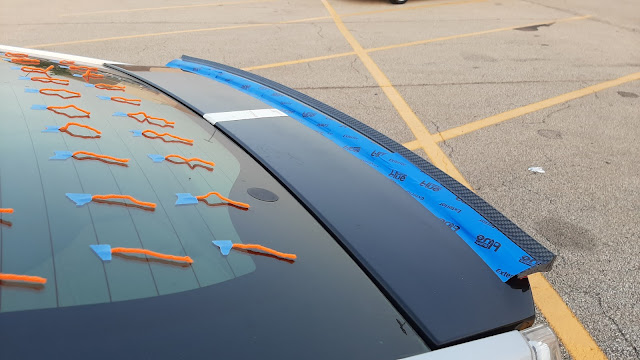Lots of
technical terms in aerodynamics are thrown around by amateurs without a real,
working knowledge of what they mean and look like in practice, and consequently, without clarity
of thought (I was certainly guilty of this for a long time). I’ve started to
try and address this with a glossary, but here I’ll focus on
one term in particular: entrainment. What is entrainment, and what is it
good for?
Entrainment
To “entrain” is to cause something to be drawn along or to follow, and this works in fluids due to pressure differences. If I “push” a fluid
somewhere—say, out of a tube or nozzle—so that it moves at some speed and has a lower pressure than the fluid surrounding it, more of
that surrounding fluid will want to come along for the ride, moved by the pressure differential. This is entrainment, and it’s a way of getting flow
for “free” since you get more flow out than you put in.
Jet
Pump
Now, the
fun part. You can build a simple device at home to see entrainment in action
for yourself! Early last semester, we were given this homework problem in a
fluids class:
I decided
to build one with roughly the same dimensions to see this work in real life. A trip to the hardware store for some aluminum bar and
PVC pipe, a cheap outdoor pond air pump from Amazon, some scrap wood and
airline tubing, and a short while later I had this:
The pump
moves air through the tube to the outlet in the pipe. By capping the end of the
pipe, I can prevent or allow air to flow into the pipe around the tube outlet.
Let’s see if it makes a difference in the pipe’s outlet flow:
 |
| Capped, the meter doesn't register any flow at all and reads 0.0 m/s. |
 |
| Uncapped, the meter shows a flow speed of 2.7 m/s out the end of the pipe. |
Yes! There is a pretty substantial difference in the outlet flow rate with the inlet
of the jet tube capped (where the meter doesn't pick up any air movement at all; it's barely detectable by feel) versus uncapped, with no change in the mass flow rate of
the air being pumped in. That difference comes from entrainment, air being
pulled along for “free” with the air injected by the pump.
Entrainment is used in a lot of real-life devices. Dyson bladeless fans, for example,
operate on this principle.

Air is
sucked in through the larger slot on the back of the ring and expelled through
the narrower opening around the front (only the sides are powered on this model;
the upper and lower arch slots are apparently just for looks). The narrower outlet
increases momentum (which is proportional to velocity) of the expelled air, and greater airflow is entrained
through the large central opening and around the outside of the ring. You can demonstrate this by covering the back
of the central opening temporarily with cardboard; the effect is subtle but
noticeable at higher fan speeds.
Turbofan
jet engines are another real-world example, but in the opposite direction. High-speed, hot air exhausted from the compressor is slowed and cooled due to entrainment of this air with the slower moving, cooler bypass air—which makes high-bypass turbofan jet engines among
the most efficient power sources for airplanes and explains their
near-universal use on commercial jet aircraft today.
Air
curtain ducts on cars can also use entrainment; a narrowing duct speeds up the
airflow and spits it out in front of the wheels, and that faster flow entrains
the outside air that has passed over the outer bumper cover or rear door/rocker
panel, increasing its momentum and preventing it spreading outward over the wheel opening. Base bleed (exhausting fast-moving air into or around the base of the car) can also use entrainment, typically to reduce the drag of cars.
 |
| For example, the ducts on this 2022 Model 3 have a larger inlet (left) than outlet (right)—about Aout = 0.94Ain—and the curve in the duct changes the direction (and thus the momentum, since momentum is a vector property) of the outlet flow. The accelerated outlet flow can entrain air over the wheel opening. |
As usual,
don’t take my word for it—a jet pump is cheap and easy to build and see for yourself.
Try it!












Comments
Post a Comment